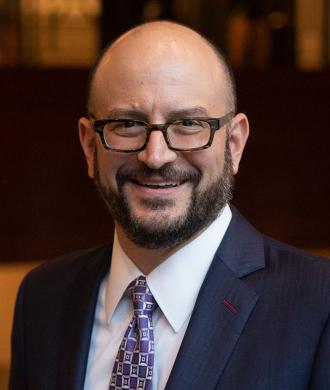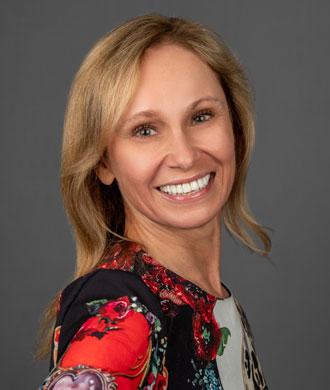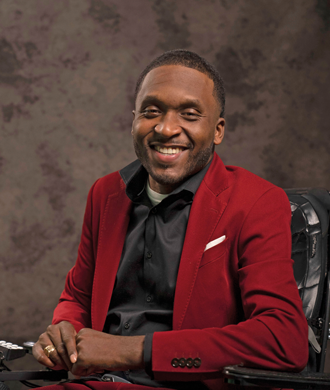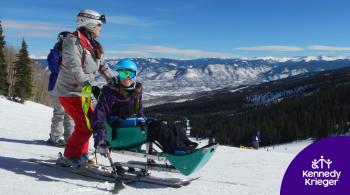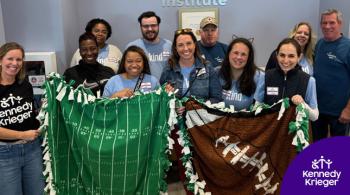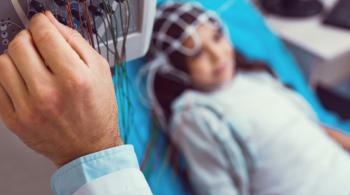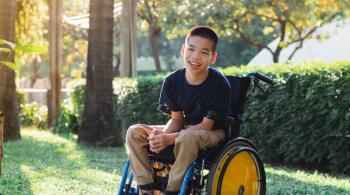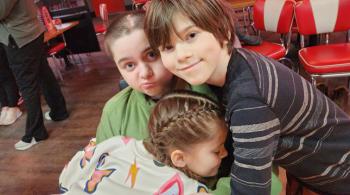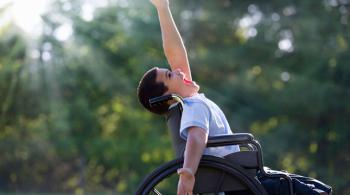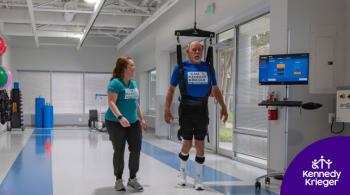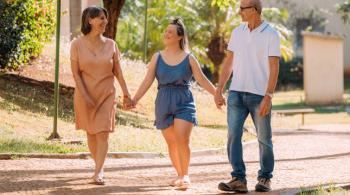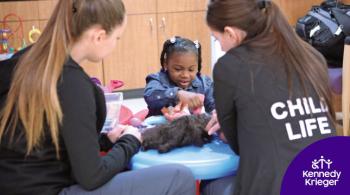Spinal Cord Injury
How does the brain communicate with the rest of the body? One critically important way for that communication to happen is via the spinal cord, a really complex bundle of nerve cells and fibers, embedded in a canal that is protected by our spinal columns. The spinal cord makes it possible for information to flow from the brain to the rest of the body and for information from the body to flow up the brain. September is Spinal Cord Awareness Month and we are pleased to be discussing this important topic.
Dr. Brad Schlaggar, CEO and president of Kennedy Krieger is joined with two of his colleagues.
- Dr. Cristina Sadowsky, a physiatrist, is the clinical director for the International Center for Spinal Cord Injury at Kennedy Krieger. She is also an associate professor in the Department of Physical Medicine and Rehabilitation at The Johns Hopkins University School of Medicine.
- Dr. Rebecca Martin, an occupational therapist, is the manager of Clinical Education and Training at the International Center for Spinal Cord Injury at Kennedy Krieger. She is an assistant professor at The Johns Hopkins University School of Medicine in the Department of Physical Medicine and Rehabilitation.
- He is also joined today by a good friend and special guest, Van Brooks. Van is the founder and Executive Director of the Safe Alternative Foundation for Education. SAFE, for short, is a non-profit organization in West Baltimore that believes that all students should have access to a quality education and the resources and opportunities that will assist them in achieving their goals. SAFE provides afterschool, weekend, and summer learning educational opportunities through vocational programs that provide real world application as well as exposing students to the world outside of their community. Van was one of the very first patients in our International Center for Spinal Cord Injury, 18 years ago. In addition, he is a member of Kennedy Krieger Institute’s Board of Directors.
Resources:
- International Center for Spinal Cord Injury at Kennedy Krieger
- Safe Alternative Foundation for Education
Learn More About Our Featured Speakers
Learn More About Our Featured Speakers
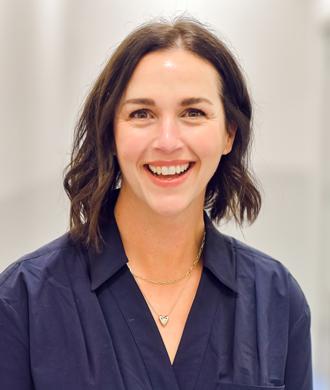
Rebecca
Martin
,
OTR/L, OTD, CPAM
View Episode Transcription
Dr. Bradley Schlaggar (BS): Welcome to Your Child's Brain, a podcast series produced by Kennedy Krieger Institute, with assistance from WYPR. I'm Dr. Bradley Schlaggar, pediatric neurologist and president and CEO of Kennedy Krieger Institute. While this podcast series has the word brain in its title, Your Child's Brain, an important question is how does the brain communicate with the rest of the body? One critically important way for that communication to happen is via the spinal cord, a really complex bundle of nerve cells and fibers embedded in a canal that is protected by our spinal columns. The spinal cord makes it possible for information to flow from the brain to the rest of the body and for information from the body to flow up to the brain. What kind of information? Motor, like controlling our limbs. Sensory including pain, temperature, light, touch, and the ability to discriminate fine details. And another kind of sensory function we call proprioception, which refers to understanding the physical position and space of our body or parts of our bodies. The spinal cord is also implicated in many aspects of our involuntary or autonomic nervous system that controls heart rate, breathing, blood pressure, urination, sexual and other functions. While our spinal columns are protective, the spinal cord is nonetheless susceptible to injury and to disease. Spinal cord injury can be caused by direct injury to the cord itself, or from damage to the tissue and bones, like the vertebra that surround the spinal cord. When that injury occurs, communication between the brain and the rest of the body is interrupted, leading to various disruptions of functions beneath the level of the injury, such as loss of sensation, strength, bowel and bladder, and sexual function. When the level of injury is high enough, it can lead to complete paralysis and death. In the US, every year there are about 18,000 new cases of spinal cord injury, and there are roughly 300,000 people total in the US, that's just about 1 in 1,000, who are living with a spinal cord injury. About 80% of those living with spinal cord injury are men, and nearly half of the injuries occur in people between the ages of 16 and 30 years. In recognition of National Spinal Cord Awareness Month in September, we're going to devote this episode to the spinal cord and injury to it. Today, I'm joined by two of my exceptional colleagues from Kennedy Krieger Institute, Dr. Cristina Sadowsky, a physiatrist, is the clinical director for the International Center for Spinal Cord Injury at Kennedy Krieger. She is also an associate professor in the Department of Physical Medicine and Rehabilitation at the Johns Hopkins University School of Medicine. Doctor Rebecca Martin, an occupational therapist, is the manager of clinical education and training at the International Center for Spinal Cord Injury at Kennedy Krieger. She's an assistant professor at the Johns Hopkins University School of Medicine in the Department of Physical Medicine and Rehabilitation. We are also joined today by a good friend and special guest, Van Brooks. Van is the founder and executive director of the Safe Alternative Foundation for Education. SAFE for short, is a nonprofit organization in West Baltimore that believes that all students should have access to a quality education and the resources and opportunities that will assist them in achieving their goals. SAFE provides after-school, weekend, and summer learning educational opportunities through vocational programs that provide real-world application as well as exposing students to the world outside of their community. Van was one of the very first patients in our International Center for Spinal Cord Injury 18 years ago. In addition, he is a member of Kennedy Krieger Institute's Board of Directors. Welcome everyone. Cristina, before we get started talking about injury to the spinal cord. Let's begin, as I spoke at the top of the podcast about the spinal cord and how it's organized some elements of it. But let's dive in a little bit deeper. What's in the cord? How is it organized?
Dr. Cristina Sadowsky (CS): The spinal cord is a very smart organ. It lies inside the spinal column, which is made up of 33 bones that are called vertebra. Five of them are fused together to form the sacrum, which is part of the pelvis, and four other ones are fused together to form the coccyx, which is the tailbone. The spine itself is divided into four sections, not including the tailbone. The cervical area, which is located in the neck, and it's labeled as C1-C7, cervical 1 to cervical 7. I'm going to use the numbering and the letters because they are going to be pertinent through our talk. The thoracic vertebra, which is T1-T12, is located in the upper back and is attached to the rib cage. Then we have the lumber vertebra, which is L1-L5, located in the lower back, and then the sacral vertebra, which is located in the pelvis, and the tail bone that I talked about. The spinal cord per se contains gray and white matter. The white matter contains neural pathways, which are super highways that transmit the information, like Dr. Schlaggar said, from the brain to the body and back. The gray matter is arranged in a butterfly shape in the middle of the cord, and houses the body of the nerve cell called the neural. There are 31 pairs of spinal nerves and roots that are exiting the cord and are carrying the information about movement to the body and about sensation, and from the organs all the way back to the brain. The spinal cord is part of the central nervous system and is more than just a conduit. It also modifies and integrates the information that passes through it. That's why once we learn how to walk, we don't have to think all the time to move the legs and arm in a manner specific to each one of us. A microchip in our spinal cord coordinates that. The spinal cord is smart, and all this magic occurs because of a beautiful interaction between chemistry, neurotransmitters, and physics, especially electricity, which we will talk about probably later in the podcast.
BS: Well, that's a lovely and clear description of the organization and I think we can get into, now, Cristina, what is meant by spinal cord injury or disease?
CS: Spinal cord injury is damage to the white and the gray matter in the cord. The damage can be done directly by trauma, like Dr. Schlaggar mentioned, like a fracture of the spine segments during a fall, a slam on the bottom of the ocean or pool during head diving. Do not do that. A motor vehicle accident or the damage done by a bullet. Sometimes though, the damage is related to pressure on the spinal cord, as in the case of an infection, a tumor, or just plain arthritis that narrows the space where the spinal cord travels. Other times, the damage is related to impaired blood circulation. Like a stroke, we call it a spinal stroke, just like the regular strokes that occur in the brain. Sometimes bugs, and microbes, and viruses invade the spinal cord directly, like in poliomyelitis, and more recently in acute flaccid myelitis. Sometimes our immune system, the one that protects us from infection, goes crazy and turns against our own cells in the spinal cord, destroying them like in the case of transverse myelitis, in lupus and other immune diseases. Those are all mechanisms in which the spine can be damaged.
BS: Cristina just took us through different ways that the spinal cord can be injured or be part of a direct or systemic illness. How common is it for people to have a disease or injury to the spinal cord, and how does that differ across the lifespan? Is it more common at different periods during lifespan?
Dr. Rebecca Martin (RM): There's about slightly less than 20,000 new injuries per year, and there are about 300,000 people living with spinal cord injury. About one in 1,000 people in the US lives with some level of paralysis because of spinal cord injury or disease. There have been some interesting trends over the last 50 years. The average age of injury, which was about 29 in the '70s, has increased to mid '40s. That's largely in part because there is a more active older population now than there was in the '70s, and they're falling. They have arthritis or narrowing of the canal, as Dr. Sadowsky mentioned, and they wind up with injuries because of those falls. Overall though, motor vehicle accidents still is the primary cause of injury, with falls being the second most common, except in patients over 60 years old in which case falls is the most common cause of injury. Violence is the third most common cause of injury. This would include gunshots, as well as physical altercations. Then the fourth most common cause of injury is sports. Now, these tend to be our younger patients under 25. Diving is a large cause as is horseback riding and football injuries. Nontraumatic injuries can happen along any point in the age range and are linked to infection or inflammatory disorders, as Cristina mentioned. There are two spikes in the ages between 10 and 19 and again between 30 and 39 where nontraumatic injuries become more common. But they're modest in comparison to sort of looking at the whole. Children in particular are susceptible to spinal cord injury and often incur spinal cord injury with traumatic brain injury, as you described, because of their relatively large head size as comparison to their body. For example, in a car accident, for an adult, the spinal cord injury might be the result of broken vertebrae because of the seat belt, for example, cutting across their middle whereas for a child properly restrained in a car seat, they may still incur a spinal cord injury because of the force of their head being pulled forward and stretching the spinal cord injury.
BS: You made the point about traumatic brain injury and traumatic spinal cord injury. Let's flesh that out a little bit more. If you take everybody with traumatic brain injury, about one in eight have traumatic spinal cord injury, and those with traumatic spinal cord injury about a third have traumatic brain injury. These are very tightly coupled for reasons straightforward as you just laid out, Becca, but really important from a clinical standpoint, both for recognizing the injury in the initial period but also for the approach to intervention. But Cristina, thinking about traumatic injury to the cord picking up on that point, how do we categorize the traumatic injury to the cord? How do we think about it?
CS: In medicine, in science in general, there is this need to define concepts precisely. In the case of spinal cord injury, we have this objective neurologic exam which we call ASIA, but the correct name is the International Standards for Neurological Classification of Spiral Cord Injury that is performed in order to describe the amount of spinal cord injury resulting from trauma. Now we use it in nontraumatic etiologies, but it's not as precise. As a result of that exam, clinicians and scientists categorize the residual neurologic deficit using letters. The letters that we talked about at the beginning: the cervicus, thoracic, lumbar, and spine, CTLS. Then some other letters that we're used to, A, B, C, D, E, then the numbers 1-12. But in this system, A is worse than D so you better get a D or an E on this ASIA exam. Because A means what we call by convention, a complete injury. But that's not actual completeness. It doesn't define that the cord was severed completely. It is a convention that we establish. It just tells us that there is no sensation, a moral function, that stems from the bottom of the spinal cord, which is the sacral area. You will hear that terms complete and incomplete associated with this classification. I do not want anyone to think that that means complete damage of the cord. This classification though helps us predict recovery. It can also be used to show improvement in neurologic function and we use it a lot in our unit at Kennedy Krieger because objective measures are important for anyone working hard to show that they are doing well. The ASIA exam is not necessarily used for children under 6-8 years of age because some concepts are tougher to understand when you're little. But don't worry, we still objectively measure progress in kiddos. My take home message here is, don't take the word complete to mean complete severance of the spinal cord.
BS: Picking up on the point about recovery and progress, it's important for us to start moving into that part of the discussion that with injury to the cord, there is very real potential for recovery and progress. Cristina, when a person has a spinal cord injury, to what extent is it possible to regain movement or function? How permanent is the condition? At some point do we determine that there is no more opportunity for recovery or does the opportunity for recovery persist?
CS: Restoring loss function is possible and is dependent on optimizing the functioning of the nervous system. When you have an injury, the nervous system is down-regulated. New cell birth, connecting neural cells through synapses, repairing the myelin, the white substance that surrounds the nerves are all dependent on activity and adequate movement. Relearning lost motor habits, or learning new ones in case of children that were injured early in life, are all dependent on performing a certain amount of activity. In fact, many times, it is not the movement that people crave and chase, but handling other negative consequences of the spinal cord injury, like ongoing pain, muscle spasm, better control bowel and bladder function. All of these functions are dependent on adequately activating the nervous system through different interventions like exercise, electrical stimulation of the muscle, vibration therapy, using the right type of medications, sometimes using surgery to reconnect nerves or re route muscles and tendons. Recovery is always possible.
BS: Van, could you share your story with us how you became injured, what point in your life that was, and how you first got engaged with Kennedy Krieger Institute because of that.
Van Brooks (VB): I was injured at the age of 16 in 2004, while attempting to make a tackle during a football game in which my head collided with the runner's knee, and I had broken my neck in two places. As a result of that accident, I was initially paralyzed from the neck down, and then eventually started to make a really good recovery. How I became involved with Kennedy Krieger was, I was in another institution going through rehab, and when it was time for me to come home, my family was looking for places that I would go to for rehab. Dr. Sadowsky, and at the time, Dr. McDonald had a conversation with my parents about starting the new spinal cord program at Kennedy. My parents said, it sounds like it was something great. The technology that they were using at the time and were going to begin to use for spinal cord injury, try some things out based off of the research that they had done sounded really good to my parents, it sounded really good to me, and so that's how my journey with Kennedy began.
BS: Then, what are some of the life changing, the challenges that you face as a consequence of that injury as a 16-year old, and how that has played out over the intervening 18, 19 years now?
VB: My life was completely flipped upside down, completely. At the age of 16, hearing someone say that you're going to be paralyzed from the neck down, unable to do anything for yourself. At the time, I wasn't breathing on my own, I wasn't eating, I couldn't talk, and of course I couldn't move. That was completely devastating because it was just, how do I even fathom what just happened? Let alone figure out how to live a fulfilling life now with a spinal cord injury. I took it day-by-day, one day at a time. Whatever was in front of me at that moment, that's what I did to get through my day, and just adapting to life socially, adapting to life back at school, of how do I navigate my new life, it was very difficult. It was even more difficult because I didn't have anybody that I knew in a wheelchair. There wasn't anybody that I could look to for advice or ask questions or just see how they go about their day-to-day life. I really felt stuck. I buried a lot of it in, which isn't really the healthy thing to do, but I felt at the time, I had no choice. Again, I was just taking it day-by-day, and like anything, the more research you look into it, the more you do things, the more you try things, you get better at it. That's just what I did, until eventually I started to make some really good progress when I began at Kennedy being one of the first patients. It isn't the institution that it is today, [LAUGHTER] but I grew with the institution, and then growing with the institution, my recovery got better and better every year.
BS: Becca, what can we do to maximize improvement after injury?
RM: I remind my patients that recovery is activity dependent, as Dr. Sadowsky just mentioned. We categorize the interventions available after injury into three categories. There's therapy, and these would be interventions that are applied by a therapist, that are intended to increase activity below the level of the lesion and generate some motion. Surgical and medical options, as Dr. Sadowsky mentioned, are medications might be used to enhance nervous system conduction or reduce the interfering components, things like spasticity and surgical reconstruction where we take nerves from above the level of the injury and plug them into muscles below the level of the injury to renovate or reanimate them. Then adaptation, we can make things better without necessarily restoring motion. That might mean somebody wears braces to walk, or they might use a special fork and plate to feed themselves. All of these things can make somebody's life better, make their motion better, and decrease the secondary complications that really impact somebody's quality of life.
BS: Becca, we just used the term spasticity. I think there's a general sense of what that might mean, but could you define it for our audience?
RM: Spasticity is resistance to movement. Some of the impulses that are coming from your brain, down your spinal cord to your muscles are actually inhibitory. They tell your muscles to relax when you don't need them. Just like the signals that tell you to move have been interrupted by spinal cord injury, the signals that tell you to not move have been interrupted by the injury. There might be stiffness or resistance to movement that can interfere with somebody's volitional movement. Maybe for example, they try to flex their elbow, bring their hand to their mouth, but spasticity in the triceps would be limiting the amount of elbow flexion they can exhibit because it wants to keep the arm in extension.
BS: Van, what activities have you found to be the most helpful in your journey of improving and recovering function?
VB: The activity that helped me the most was definitely those that involved weight bearing. Just being upright was extremely helpful. Whether that was me standing in the stander, whether that was me in one of the walking machines over at Kennedy, that was extremely helpful. The electric stimulation was also very helpful, being able to ride the bikes. Just that movement. I was always told if you don't use it, you lose it, and so just being able to just act of keeping my legs moving, getting the stimulation going through my muscles and my muscles firing stopped me from losing the muscles that I did have. Something that I did notice was that, when I do take a little time off from therapy, my legs will begin to get smaller. That to me, that's just proof that the machines, the exercises, the therapy that I'm doing at Kennedy, it works because the minute I'm back upright, the minute I'm back moving, the minute I'm back receiving stimulation, it's helping my muscles grow, that they're getting bigger. Again, just the work that we've been doing over at Kennedy just trying a lot of different things, which is one thing I really love about Kennedy is that the therapists are open to trying new things, thinking outside of the box. That has also helped me with just mobility, because I don't have triceps, because I don't have use of my fingers, I compensate a lot with shoulders, I compensate a lot with back. The conversations are around, well, how can I continue to do those things without putting as much stress? How can I begin to build up some other functions, whether that's stimulating my triceps and doing exercises while doing that. I say all that to say it's just the constant movement has helped me. The weight bearing and the electric stimulation I've been receiving.
BS: Van, as you know, hope through motion signs are up throughout the Center for Spinal Cord Injury at Kennedy Krieger. What does that turn of the phrase hope through motion mean to you?
VB: It means everything because being paralyzed, the number one thing that I always wanted was to become independent again. I went from being completely independent to needing my parents to help me, Needing family, needing friends, needing people to help me every single day. That hope through motion, of the more I would get back, a muscle firing, being able to take a step for the first time, being able to do a push up, a sit up, transferring myself. All of the small things that led up to where I am today. In my worst hours, my worst times when I may not even wanted to be at therapy, the minute something would fire, that's the hope of, I understand this is a long journey to recover, but that's the hope that I needed to stay along this journey. Because for me, anyway, there's been so many times where I've gotten up and I was like, is this worth it? Should I just stop going to therapy? Should I just be comfortable and complacent with what I've been able to accomplish within my recovery because I'm independent and just live my life that way? It's like when I start to feel like that I might get an ankle movement that I've never had before, even 18 years into my injury. It's just like, no, I can't give up on that. I got to keep trying, I got to keep pushing, because that hope gets sparked again. I absolutely love the term hope through motion. It's perfect and it means everything to me because that is something that has kept me going for now entering with September will be 19 years for me.
BS: Cristina, can you tell us what we mean by hope through motion?
CS: All the audacity of hope. It inspires presidents and common folks alike, leaders, and followers. Hope is an essential driver for discovery and innovation, and is an excellent functional adaptation technique. Wikipedia defines it as an optimistic state of mind that is based on an expectation of positive outcomes with respect to events and circumstances. When discussing a central nervous system restoration, hope has an important role, as we know that restoring neurologic function is an achievable goal. Motion, as an activity, an exercise is one of the three pillars of good healthy living together with nutrition and sleep. It works through a combination of processes, including optimization of neural firing, neuroplastic changes, which means basically finding a new way to do things and repetition of a task, just like potty training and learning to play a sport or an instrument. A lot of what is lost after paralysis onset has to do with increasing the amount of motion and activity. There are essentially eight neurotransmitter classes, and most of them are positively modulated by exercise and motion. In the same time, hope cannot be an obstacle to the present because living in the future and waiting for something good to happen is an inhibitory action. The hope through motion motor was meant to reconcile the aspirational nature of hope with a very real concrete notion of grinding work and exercise.
RM: I think the other thing about hope is that we're not willing to tell somebody, no. We have the reputation in the field as the place that somebody goes to work on walking, but once they're here and I've had other professionals from other institutions come and see that it's not just walking, it's whatever's next for the patient. We know that we can make things better today. We know that we have interventions where we can make things better for you right this minute. But we also know that the interventions we're providing to you are setting you up for long term success. The turnover in the central nervous system, the brain and the spinal cord is much, much slower than it is in the peripheral nervous system, so the nerves that run from your spinal cord out to your muscle, those turnover at about the rate of one centimeter a month after injury. Whereas in the central nervous system, we're talking about years. Traditional models of rehabilitation where you sit in a wheelchair and you focus really solely on that adaptation component actually does your nervous system a disservice. It produces a disorganization which inhibits healing. In therapy, we focus on providing the right input to drive a motor output while optimizing the nervous system for recovery like Dr. Sadowsky mentioned. We really want patients to recover. The number of times I walked into a room and seen a 19 year old boy who says to me, ''I only want to walk. I don't care about using my hands, I just want to walk,'' and I'm like, ''I got you. I'm on board. I want you to walk too.'' But there's all these things that lead up to it. There's an assumption that if you can walk, you'll be able to do everything else. We really are pushing people to their next level when you walk in our gym everybody's out of their wheelchair. In some cases, it's the first time a child has ever seen another adult in a wheelchair and that alone is a great source of hope for both clinicians and patients.
BS: I think all three of us during our clinical training, neurology, occupational therapy, physical medicine rehabilitation we all very likely learned that the window of opportunity for recovery was much more narrow than what we're talking about here. In neurology, it was often, if you haven't demonstrated increased improvement in that first nine months or a year, you're probably at a plateau and that's as good as it's going to get. But what we're talking about here is a window that is open and remains open for the reasons that you both have just described. Can both of you reflect on the contrast between what the training in our disciplines has taught us and the real world experience of managing patients in this setting?
CS: I think that when we started the screening we banned the word plateauing. Because you only plateau if you do not do something to change. If you do the work, you're going to have the result. The walking is always motor, sensory, and training of the autonomic nervous system because this is what's affected in this condition and spinal cord disease and injury.
RM: I think you're right, Brad, but a lot of what I was taught in school back in the 1900s [LAUGHTER] was that recovery only happens in the first six months, maybe a year, and you have to start acutely preparing somebody to live in a wheelchair. As an OT, we focus a lot on hand and upper extremity function and I was taught how to make a dozen different splints. I was taught to wrap hands tightly so that passive wrist extension would cause finger flexion, allowing somebody to grasp something. One of my first patients here at Kennedy Krieger, I made every one of those splints and I [LAUGHTER] taught him how to use that passive wrist extension for finger flexion. I was certain it was my job to make sure that he could put his pants on and he could transfer and all of these things. He was, like okay, cool. He left the hospital and he came back a year later after being in college, and he was like, I have no idea where any of those splints are and I've never used one of them. We were like, okay, we're going to have to try something different. At that time, one of the physicians in a leadership position was studying electrical stimulation, we were doing a lot of stimulating of the muscles and the nerves in the hand and the forearm to generate a grasp and we started training in that way. He started to recover actual grasp and release. It wasn't the passive, not effective grasp, it was actual finger flexion and finger opening. He figured out how to put his pants on when his girlfriend said, ''I won't marry you till you can do it yourself.'' There are these components, these things where we have to listen to the patient and it is a gift to be a part of a patient's process and a patient's journey through that.
BS: Rebecca you just mentioned, the more active population and part of that activity and part of the fun is in adaptive sports. Last September we had an entire episode of this podcast that was devoted to adaptive sports. What are some of the recreational and competitive adaptive sports opportunities? How important are they in the context of what you're describing for recovery, but also really for living one's best life and how can someone get involved?
RM: Recovery is activity dependent. I have to say that at least like five times. I'm getting paid by the number of times I say that probably. [LAUGHTER] Just kidding. All of this counts as activity. Participation in either competitive or recreational sports, participation in recreational activities, that all counts as activity which all benefits the nervous system and leads to recovery. At the institute, we have competitive teams for lacrosse and wheelchair rugby. We have the Bennett Center here, which is an amazing resource here in Baltimore, where patients of all ages and all diagnoses really are able to be involved in things like wheelchair basketball, training for track and field events, and many Bennett Blazer alumni have gone on to participate in elite competition, Olympics and Marathon sports. Here at the institute, we have more recreational type things. Also, we just had a bowling outing, we have horseback riding. People curious of volunteering can reach out via our website, spinalcordrecovery.org. In Baltimore there is BARS, the Baltimore Area Adaptive Recreation and Sports. They also have a website that can lead you to some options.
BS: It reminds me to say that we can put on the page for this episode links to some of these resources. We can put those together. Cristina, even though we're in the context of recovery and hope through motion, we're also talking about chronicity and disability. What secondary clinical conditions in that chronic state result from a spinal cord injury and what are the clinical approaches to preventing them?
CS: Because the spinal cord is the conduit of all information from the brain to the rest of the body, almost every system in the body has negative consequences of paralysis. Starting from the top, breathing, cough, swallowing, ability to breath on your own is impaired. Heart. You can have abnormally high or low heart rate. Blood pressure can be abnormally high or low. Circulation is affected by developing clots and limb swelling, leg swelling, especially. Stomach and the whole gut is affected by constipation and ability to control the evacuation. The bladder is affected by incontinence and many infections, even stones, bone can break. It becomes osteoporotic and gathers fractures. Because the muscle gets atrophied, it cannot process the sugars and fats that we are eating. Adults and children paralysis can develop diabetes and even high cholesterol. We have to take medication to help pain and bladder function and stop muscles pass on. Because these patients have to spend much more time getting out of bed and getting washed and dressed and ready for any activity, including school and work, people with paralysis cannot be spontaneous, cannot participate in all the learning and fun activities available to everyone, to peers, and that can lead to sadness, depression, and sometimes inability to remember things like memory deficit, that can be related to medications or to the concussion or brain injury. Everything is conducted through the spine. The spine is smart and the spine can recover after an injury.
BS: Van, speaking of these secondary medical conditions, what frustrates you most of all about them? What do you wish people would understand more about some of the chronic issues that come with living with spinal cord injury?
VB: Yeah. Oh my goodness, that's such a great question. Because for me, I'm in pain every day. The level of pain is different. But there's some pain every single day. That's something that just a lot of people really don't understand. Especially in my work. I have to show up every day for my kids, I have to show up for my community, and I have to show up with a smile on my face. Sometimes it's extremely difficult to do that just because of the pain that I wake up with. If people understand and spinal cord injuries take a toll on your body, it takes a toll on you physically and mentally. The other side of it is, no matter how careful you are with your regimens, whether that's your bathing, your dressing, your transfers, something is always going to happen, and the smallest of scrapes could turn into such a big wound. It's fortunate for me, I have my feeling. If I scrape myself on something, whether that's me transferring, I scraped my legs or my bottom or something like that because I have my feeling, it's a little easier for me to monitor. But I have so many friends who don't have feeling, and literally a small scrape has led to them being in the hospital for surgery. That constantly affects quality of life for them. It affects quality of life for those who have to care for them. It affects working. There are so many things that just comes along with having a spinal cord injury that people don't see and don't understand for so many people, including myself.
BS: Van, I remember five years ago, the first time we met you told me your story, your expectation for what your life was going to be like, and how dramatically it changed with the injury. Expectation of being an elite athlete, professional athlete. Then complete uncertainty about what was going to come next. You just mentioned a moment ago about going to work, having a smile on your face for your kids. At the top of the episode, I talked about the SAFE Foundation that you founded and lead. Let's talk a bit more about that effort. What you've done and how gratifying it has been.
VB: The foundation, my work there has given me that sense of purpose. Having goals of being a professional athlete, and that's all I literally was working towards until my injury, not knowing what my new life will look like, quality of life, I was uncertain of what my life would become, what I would do. One of the questions that I always asked was, why me? Why was I the one to get injured? Why did everything I was working towards get taken away? It wasn't until 2012, I was leaving a session over at Kennedy. I woke up that morning in a really bad mood. Body hurting. I didn't want to go to therapy, but I had a routine and I literally ended up in the parking lot. I was like, I'm here now and I'm not driving back home. I went up, I told my therapist, I was like, hey, I want to try to walk. They allowed me to try to walk and I took some steps on my own for the first time at that point in eight years, it hit me. The answer to the question of why me? I was being prepared to do something much larger than myself. I was being prepared to do the work with my foundation of bringing resources and opportunity to my community and my injury allowed me to connect with so many people within our mission because the mission is to teach the importance of having an education and a backup plan for life. Here I am, sitting in front of someone in a wheelchair saying this was my life. I was on track to being a collegiate athlete at a D1 school with the ultimate goal of being in the NFL and I injured myself. The only thing I had left was my education. Being able to give that message to my community, being able to give that message to the students that I work with, and seeing how my story is impacting them and motivating them actually to go and take their education serious, and to go all in academically with the hopes of achieving their goals, but using the education as the vehicle to do so. It's very fulfilling now that I know what the why is, and I know what my purpose on Earth is after my spinal cord injury because so much of my identity was tied up into being an athlete.
BS: Thanks Van. I'll close with this question to both of you, Cristina and Becca. It's really my favorite question to end these episodes, which is what's on the horizon? What's the latest research that's being done for spinal cord injuries? Becca, you said we're getting better. Part of that is because of clinical investigation. What's on the horizon for us for spinal cord injury?
RM: I'm super excited about our current research. We are seeing patients make bigger changes, faster changes, more meaningful changes than we ever have before. Like I mentioned before, much of our current research at the Institute is looking at the concept of neuromodulation. Inherently, the brain and the spinal cord are an electrical system, and spinal cord injury is an electrical problem. We are focusing on providing electrical stimulation to increase excitation in the spinal cord and help patients to demonstrate voluntary motion. We have studies currently running looking at upper extremity function, lower extremity function, and function specifically in children. At the Institute we are the only site in the US currently studying neuromodulation in children.
CS: In addition to that, there is an international study that is now in the second iteration, and it includes 40 countries in the whole world, that describes the social, economic, and demographic needs of individuals with spinal cord injury. Because we do not function in a vacuum. We learn from others, and others learn from us.
BS: Thank you to each of our guests. We hope that you our listeners have found this discussion informative and helpful. Please check out our entire library of topics on your child's brain at Wypr.org, KennedyKrieger.org, Wypr.org/Studios, or wherever you get your podcasts. You've been listening to your Child's Brain. Your Child's Brain is produced by Kennedy Krieger Institute with assistance from WYPR and producer Spencer Bryant. Please join us next time as we examine the mysteries of your child's brain.

